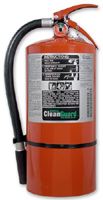| The Home page of ILPI's Safety Data Sheet (SDS) Resource, the leader in SDS information since 1995! | |
| The history and philosophy behind this resource. | |
| A curated collection of books and reference materials concerning Safety Data Sheets and closely related topics. | |
| Paste your plain text SDS into the SDS-Demystifier, and it will be converted into a hypertext-enriched document with links to detailed explanations of each key term. | |
| An extensive list of frequently asked questions about Safety Data Sheets including regulations, content, compliance, and more. | |
| A humorous take on Safety Data Sheet jargon. Fill in the blanks on our entry form to generate a personalized Unsafety Data Sheet to share with your coworkers. | |
| Since 1995, we've maintained this massive curated list of the best places to find Safety Data Sheets on the Internet. | |
| You are here! Way more than a glossary, this hypertext-enhanced resource covers hundreds of SDS-related terms and expert knowledge. Each entry includes both the SDS relevance and links to additional authoritative resources. | |
| Archived results of Safety Data Sheet related polls taken by some of our millions of site visitors | |
| The OSHA regulations behind SDS regulations, including the inspection guidelines and over 400 official interpretations letters under the Hazard Communication Standard | |
| Commercial suppliers of SDS authoring and management software as well as cloud compliance services. | |
| Commercial companies that will create SDS's for your specific needs as well as SDS translation companies. |

Safety signs, banners, and scoreboards? Get yours at Safety Emporium!
Definition
An alcohol molecule has the general formula ROH where R is an alkyl group, O is an oxygen atom and H is a hydrogen atom. Alcohols can be thought of as analogs of water, H2O, in which one hydrogen atom has been replaced by an alkyl group.

Protect sensitive electronic and laboratory equipment with Ansul CleanGuard extinguishers from Safety Emporium.
"Alcohol" is sometimes used to refer to one specific alcohol, ethanol (also known as ethyl alcohol). See below for further information.
Phenols have a similar formula, ROH, but R is an aryl group.
Just to confuse matters a little bit, the simplest example of a phenol, C6H5OH, is named phenol.
A compound that contains a phenol unit may sometimes be referred to as phenolic as in "phenolic resin".
The molecular structures of some common alcohols and phenols are shown below:

Additional Info
Ethanol (ethyl alcohol) is the alcohol found in alcoholic beverages such as beer and wine. Consumption of ethanol can lead to intoxication (drunkenness) as well as coma and death if too much is consumed. The ethanol content of such beverages is often expressed as proof where 2 proof = 1% alcohol by volume. Therefore, a beverage that is 100 proof is 50% alcohol by volume and 100% pure ethanol is 200 proof. For those who are calculationally impaired or have consumed too much ethanol, here is a convenient conversion calculator:

Ethanol is sold commercially in denatured form, meaning that a small amount of a difficult to remove and toxic material such as benzene has been added. The purpose of this is to prevent people from drinking and/or selling the ethanol. Chemists may buy absolute (200 proof, 100% pure) ethanol, but there are strict oversights and regulations that must be followed. Under no circumstances drink laboratory ethanol, even if it is marked "absolute" as the bottle may have been contaminated during use or storage.

Ethanol is the only alcohol that is "safe" for human consumption. Drinking methanol, isopropanol or denatured ethanol, even amounts as small as an 1 to 2 ounces = 50 ml (see volume units), can lead to blindness, coma and death
Alcohols are generally hygroscopic, meaning that they often contain a fair amount of water. This can be particularly dangerous if you are working with an alcohol and a water-reactive metal such as sodium or potassium.
Alcohols are generally incompatible with acids and other oxidizing agents.

Store your solvents safely with flammable storage safety cabinets from Safety Emporium.
SDS Relevance
Many alcohols are flammable. Some, such as methanol, burn with an almost invisible flame, so be very careful to avoid heat, flame or other ignition sources and make sure you have a proper fire extinguisher on hand. Numerous injuries to instructors and students have occurred using methanol in classroom demonstrations, a practice that needs to stop.
Many alcohols are very soluble (or even miscible) with water. This chemical similarity with water means that alcohols can readily penetrate your skin. Phenols are particularly dangerous in this regard as many are not only irritants, but are also fairly toxic. Always wear proper personal protective equipment such as gloves, goggles, aprons and/or suits when working with phenols.
Read about not one, but five different people who died after a single skin exposure to a common phenol for which there is no antidote!
Further Reading
- ATSDR has a nicely written Public Health Statement on Phenol.
- IUPAC nomenclature rules for the systematic naming of alcohols and phenols.
- Biological Impacts Of Alcohol Use: An Overview by Michaele P. Dunlap.
- Nomenclature and Reactions of Alcohols at the Virtual Textbook of Organic Chemistry.
- Safety Alert: Do Not Use Methanol-Based Flame Tests on Open Laboratory Desks at the NSTA, just one of many authorities warning of the dangers of methanol in school laboratories.